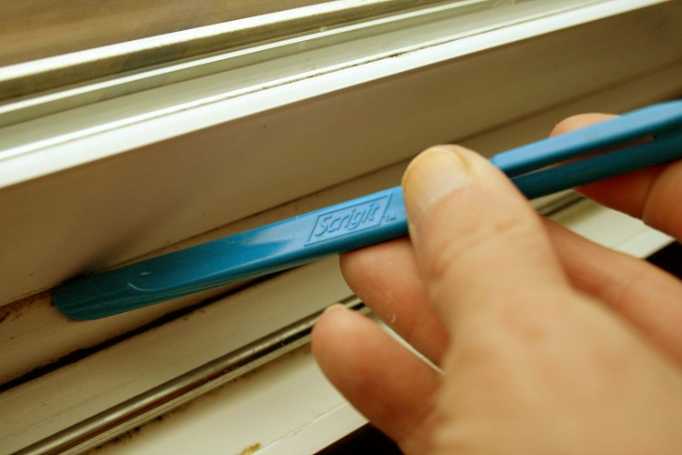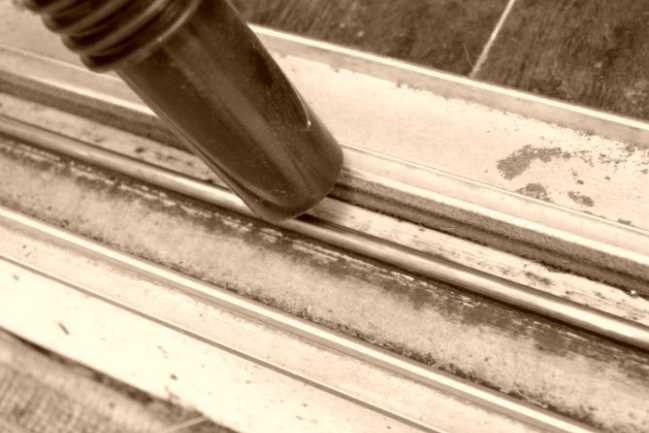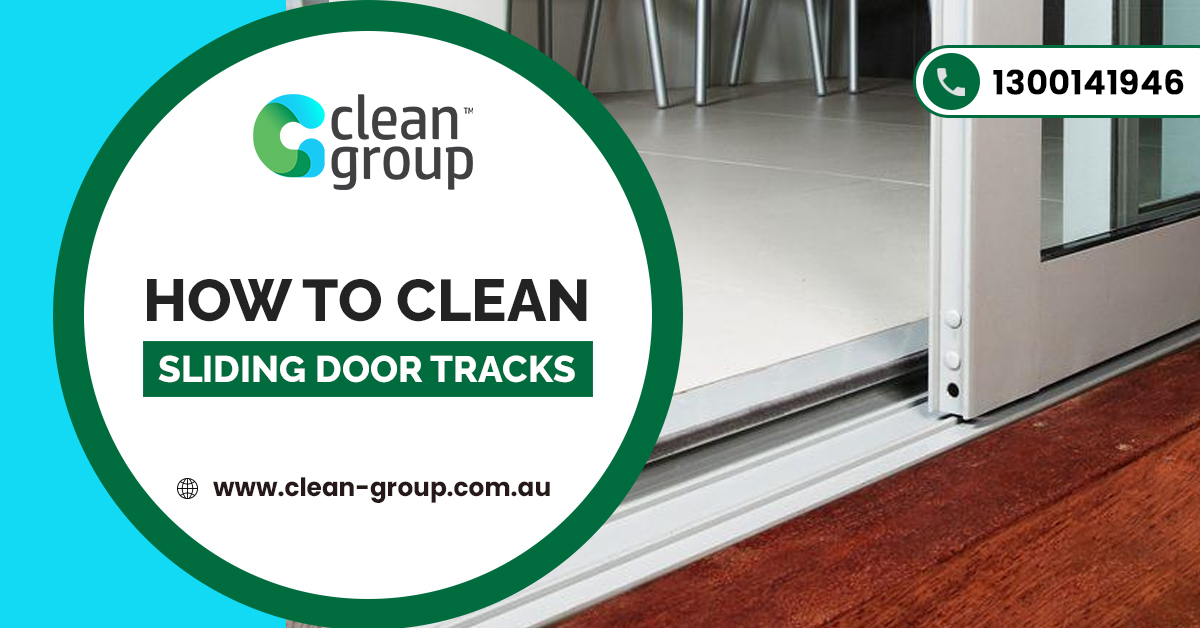Sliding doors are an excellent addition to every home, especially if there’s not enough space for hinged doors.
Furthermore, sliding doors have more glass space, which provides extra daylight in your house. They are perfect for tiny areas with no room for separate windows as they create an illusion of a bigger space and let a lot of sunlight in so you can grow your plants, make a reading seat next to the glass, or hang a hammock and chill out after work. Regular commercial cleaning keeps them looking beautiful and increases their life.
Whether you decide to have sliding doors for practical or aesthetic reasons, it doesn’t matter. They always look trendy and provide a contemporary touch to your home. Having sliding doors is great, but there’s one downside that can be deal-breaking when considering adding these doors to your home.
You are probably guessing the issue: dirt in the door tracks. Piled-up dirt, dust, dead insects, and whatnot are often stuck in the sliding door tracks, and no matter how much you avoid it, it can be annoying.
Cleaning the door tracks can be challenging, but it’s an easy task compared to cleaning the walls before painting, for example. The reason why people often avoid cleaning door tracks is that the dirt is mainly invisible. The problem occurs when the door stops sliding, when it gets stuck, or when it becomes too sticky.
When this happens, we don’t know if it’s broken, if we have to call the sliding door company, or if we need a new door. However, when realizing it’s all because of the dirt, the ‘master cleaner’ inside wakes up, and we jump to the tracks with dozens of detergents, towels, and brushes to try to make the door work again.
Sliding Door Track Cleaning Equipment

Forget about buying expensive detergents or chemicals you see in the commercials. Cleaning sliding door tracks is not as difficult as you think. All you need is to discover a couple of tricks that will help you change your point of view and learn once and for all how to clean sliding door tracks with ease.
Forget about pricy chemicals and wallet-draining home cleaning services. All you need for cleaning the sliding door tracks are the following simple items:
- vacuum cleaner (handheld or regular)
- baking soda
- hydrogen peroxide
- paper towels or clean cloths
How to Clean Sliding Door Tracks
The first thing to do is vacuum the loose dirt with the handheld vacuum cleaner. If you only have a regular vacuum cleaner, use the hose attachment. After removing the debris from the tracks, it’s time to get into the deep cleaning.
Sprinkle baking soda in the sliding door track and then pour hydrogen peroxide on top and let it sit for 10 minutes. The chemical reaction between these two compounds will create foam that will lift all the remaining dirt from the track.
When you see this happening, grab some paper towels or clean cloths and collect the foam with all the dirt inside. The combination of baking soda and hydrogen peroxide eliminates even the most stubborn dirt from the track that you can’t even see.
After you finish the wiping, rinse the tracks with clean water to remove the leftover residue and dry them with a clean cloth. The entire process shouldn’t take you more than 20-30 minutes.
Consider repeating this cleaning procedure right away when your door gets stuck or feels rough when sliding.
How to Deep Clean Sliding Door Tracks

It’s not like the previous cleaning process isn’t good enough, but here we want to share a deep cleaning sliding door track tip for people who’ve been avoiding this task for too long.
Some sliding doors are victims of excessive dirt accumulation. In these cases, the most reasonable solution is to remove the door from the tracks. By doing so, you will get visibility of everything that’s preventing your door from sliding.
You can also use a vacuum to remove the dirt. Then, wash the tracks with a solution of warm water and vinegar. It will help remove the dirt and disinfect the door tracks.
Cleaning the track rollers is also a must in this situation because you can’t even imagine how dirty they get. Deep cleaning of sliding door tracks will make the door work like new, and you’ll have longer-lasting effects.
Extra Tip
If by any chance you notice a greasy stain in your sliding door track and you can’t remove it by just wiping it, then grab an old toothbrush and scrub it with it.
Always keep your old toothbrushes in your cleaning supply cabinet. They have a wide range of uses around the household, especially for cleaning hard-to-reach areas like narrow door tracks.
Lubricating Sliding Door Racks
Sliding doors and windows experts recommend once-a-month lubrication of the tracks to provide flawless movement of your doors. If you already have this type of door at your home, then you might want to consider buying silicone lubricant for metal sliding doors and apply it once in a while to avoid roughness. Do this often, especially if you live in areas with high humidity or close to the ocean.
What about Wooden Sliding Doors?
All the tips that we shared with you so far refer to metal sliding doors, which are the most common. If you have a sliding door at your home, it’s probably a metal one.
However, in some countries, people produce wooden sliding doors.
These racks are not as deep as the metal ones, so the cleaning mainly consists of vacuuming and dry wiping.
The maintenance of wooden sliding doors depends on maintaining the wood itself, as the material is prone to rotting, mould, and termite attacks.
Safety Precautions and Warnings When Cleaning Sliding Door Tracks
Cleaning sliding door tracks is a straightforward task, but it’s important to follow basic safety precautions to avoid accidents or damage. Always wear protective gloves to shield your hands from cleaning agents like hydrogen peroxide or vinegar, which can cause skin irritation if left on for prolonged periods. When using any liquids, ensure the floor area around the door is dry and free from slippery residues to prevent slips and falls. Avoid mixing cleaning chemicals, as some combinations can release harmful fumes. If you have pets or children, keep them away from the cleaning area until all residues are wiped dry. Additionally, handle tools such as toothbrushes or vacuum cleaners carefully to avoid scratching the door track or glass.
Types of Sliding Doors and Their Cleaning Requirements
Sliding doors come in a variety of materials, each requiring specific cleaning approaches. While metal and wooden sliding doors are common, vinyl, aluminum, and fiberglass doors are also widely used.
- Vinyl Sliding Doors: These are low maintenance but can accumulate dirt in their tracks. Use mild detergent mixed with warm water for cleaning vinyl frames and tracks. Avoid harsh chemicals that can degrade vinyl surfaces.
- Aluminum Sliding Doors: Aluminum tracks can corrode over time if exposed to moisture. Use a non-abrasive cleaner and rinse thoroughly to prevent corrosion. Applying silicone lubricant after cleaning can protect the metal surfaces.
- Fiberglass Sliding Doors: These doors are durable but can be sensitive to strong chemicals. Stick to gentle cleaning agents like vinegar and water to maintain their finish. Avoid abrasive scrubbers.
Understanding the type of sliding door material you have will help you choose the most effective and safe cleaning method, preserving the door’s functionality and appearance.
Frequency and Signs That Indicate Sliding Door Tracks Need Cleaning
Regular maintenance is key to ensuring sliding doors function smoothly. As a general rule, clean your sliding door tracks at least twice a year. However, depending on your environment, more frequent cleaning may be necessary.
Signs that your sliding door tracks need cleaning include:
- Difficulty sliding or resistance when opening or closing the door.
- Visible dirt, dust, or debris buildup in the tracks.
- Unusual noises such as squeaking or grinding during door operation.
- Doors sticking or becoming misaligned.
If you live in dusty environments, near construction sites, or in coastal areas with salt air, consider cleaning monthly to prevent corrosion and dirt accumulation.
Preventive Tips to Minimize Dirt Accumulation in Sliding Door Tracks
Preventing dirt buildup can save you time and extend the life of your sliding doors:
- Install Door Track Covers: These help keep debris out and reduce the frequency of cleaning.
- Use Weather Stripping: Adding weather stripping around the door can minimize the entry of dust and insects.
- Regular Vacuuming: Use a handheld vacuum weekly to remove loose dirt before it compacts.
- Keep Surrounding Areas Clean: Sweep or hose down the porch, deck, or patio near sliding doors to reduce the amount of dirt brought inside.
Tools and Materials: Why They Matter
Choosing the right tools can make sliding door track cleaning more efficient:
- Handheld Vacuum Cleaner: Its small size and maneuverability allow you to reach narrow tracks and corners better than a broom or regular vacuum.
- Soft-Bristled Brush or Old Toothbrush: Ideal for scrubbing stubborn dirt without scratching metal or wood surfaces.
- Microfiber Cloths or Paper Towels: These materials absorb moisture effectively and trap dirt without leaving lint behind.
- Silicone-Based Lubricant: Preferred over oil-based lubricants like WD-40 because it does not attract dust and debris, ensuring smoother door movement for longer periods.
Troubleshooting Common Sliding Door Issues
If cleaning and lubrication do not restore smooth sliding, consider these troubleshooting tips:
- Check Rollers: Worn or damaged rollers often cause sticking. Inspect for cracks or flat spots and replace if necessary.
- Inspect Track Alignment: Misaligned tracks can prevent doors from sliding properly. Adjust or realign tracks following manufacturer instructions or seek professional help.
- Look for Obstructions: Small stones, sticks, or debris hidden in the track can impede door movement.
- Door Frame Damage: Warping or swelling of the door frame due to weather exposure may require repairs.
Environmental Considerations When Cleaning Sliding Door Tracks
Being mindful of the environmental impact of your cleaning process is important:
- Avoid harsh chemicals that can contaminate water supplies when rinsed outside.
- Dispose of used paper towels or cloths responsibly, especially if they contain chemical residues.
- Opt for biodegradable and non-toxic cleaning products to reduce environmental harm.
- Minimize water usage by using damp cloths instead of excessive rinsing.
More Post: Expert Tips for Sparkling School Spaces
Frequently Asked Questions (FAQs)
Can I use WD-40 instead of silicone lubricant on sliding door tracks?
WD-40 is primarily a solvent and water displacer, not a lubricant. It may temporarily ease door movement but can attract dirt and grime over time. Silicone-based lubricants are preferred for long-lasting, clean sliding.
How often should I replace sliding door rollers?\
Rollers typically last 5-10 years depending on use and maintenance. Replace them if you notice cracks, rough movement, or if the door frequently sticks despite cleaning.
Can I use bleach to clean sliding door tracks?
Bleach is not recommended as it can corrode metal parts and damage wood finishes. Stick to milder cleaning agents like vinegar or commercial cleaners made for sliding doors.
What should I do if my sliding door is still sticking after cleaning and lubricating?
Inspect the rollers and track for damage or misalignment. If problems persist, contact a professional for repair or replacement advice.
More Post: Expert Strata Cleaning: Elevate Your Property’s Appeal
Final Word
As you can read, cleaning sliding door tracks is nothing from a different planet, and it doesn’t require expensive detergents or special cleaning services.
You can do the entire process by yourself, using affordable and everyday items from your home.
No matter how tricky this chore may seem, it will only take you half an hour tops, and you won’t have to worry about sticky or malfunctioning sliding doors even again.
Good luck!

